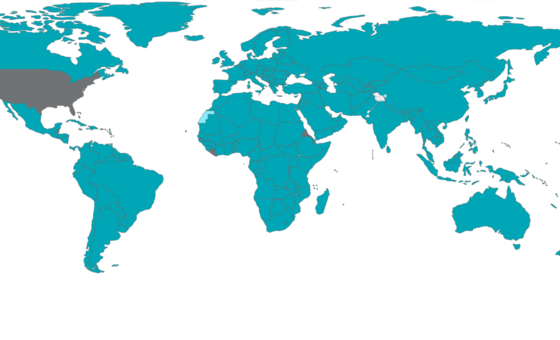- ImpactWe help parliaments to become greener and to implement the Paris agreement.We support democracy by strengthening parliamentsWe work to increase women’s representation in parliament and empower women MPs.We defend the human rights of parliamentarians and help them uphold the rights of all.We help parliaments fight terrorism, cyber warfare and the proliferation of weapons of mass destruction.We encourage youth participation in parliaments and empower young MPs.We support parliaments in implementing the SDGs with a particular focus on health and climate change.
- ParliamentsNearly every country in the world has some form of parliament. Parliamentary systems fall into two categories: bicameral and unicameral. Out of 190 national parliaments in the world, 78 are bicameral (156 chambers) and 112 are unicameral, making a total of 268 chambers of parliament with some 44,000 members of parliament. IPU membership is made up of 180 national parliaments
Find a national parliament
We help strengthen parliaments to make them more representative and effective. - EventsMeetingIndonesiaThe World Water Forum is the world’s largest event on water, organized every three years.-
- Knowledge
Discover the IPU's resources
Our library of essential resources for parliamentsGlobal data for and about national parliamentsLatest data and reports about women in parliamentResolutions, declarations and outcomes adopted by IPU MembersRecent innovations in the way parliaments workThe latest climate change legislation from the London School of Economics' database
Five takeaways about the cloud
The Transforming Parliaments webinar on Cloud computing: Choosing the best approach brought together parliaments to look at the different cloud services available to parliaments and some specific use cases to support parliamentary processes and business.
Here are the top five takeaways from the webinar.
- Parliaments need a cloud strategy
Parliaments are used to managing their data in house, with their own servers housed within the parliament building and a team to manage and maintain them. But this approach is now evolving. Data can be hosted in the cloud without the need for “on premises” infrastructure and capacity. Parliaments need to consider their options for using different levels of the cloud, such as:
- Infrastructure as a Service (IaaS) where the parliament rents infrastructure and “lifts and shifts” its data and applications to the cloud.
- Platform as a Service (PaaS) where the parliament purchases a complete, ready-to-use, cloud-hosted platform for developing, running, maintaining and managing various applications.
- Software as a Service (SaaS) where the parliament uses on-demand and ready-to-use applications (such as SharePoint Online or Google Workplace, etc.)
Each level has different cost, organizational and operational impacts, and requires careful consideration, which needs to be defined in an overall cloud strategy.
- The cloud enables faster deployment
Parliaments can innovate faster in the pursuit of a modern digital workplace when they embrace a digital-first approach. The cloud allows the internal ICT organization to develop and roll out services much faster. Users can be provided with new applications within days or weeks instead of months and the quality of services can be improved, with greater reliability and security.
- Planning and preparation are essential
One of the first things parliaments need to define is their data classification policy. This provides an overview of all the records and documents produced in parliament, along with the corresponding access levels (confidential, internal, public, etc.), user groups (MPs, staff, specific committees, etc.). The policy will indicate designated storage systems (e.g. physical storage spaces, on-premises servers or external cloud services). Without this overview, parliament cannot make informed decisions on what data to store in the cloud.
- The cloud is an accelerator but comes with a cost
The cloud should not immediately be perceived as the cheapest option for parliaments. The cloud gives parliaments the ability to innovate faster and roll out digital services with better “time-to-market” and higher quality standards. For smaller parliaments with less legacy infrastructure, the cloud can be an accelerator, providing an opportunity to forgo the constraints, time and cost of building inhouse infrastructure and human skills and capacity, and of migrating data from old systems to the cloud. Use of the cloud avoids many of the asset-based costs of traditional IT infrastructure. Nevertheless, the cloud still has set-up costs and will require an operational budget.
- Start small and scale up
First, develop a clear business case. The cloud is a new way of working so get some cloud experience by starting with small pilot projects and learning from different cloud platforms before taking the next steps and scaling up. Once you have some basic knowledge, you can draw on good practices, particularly from other parliaments. If they are available, make use of national public sector guidelines for the cloud.
To learn more about the cloud and how parliamentary administrations can choose better approaches, you can watch this highlights video of the recent Transforming Parliaments webinar, as well as the 2022 webinar on Parliaments in the Cloud.





